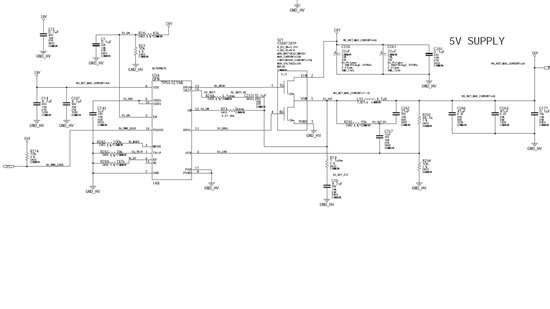TI Team,
I'm using the circuit configured below (see attached diagram) to regulate a 24V input down to 5V at roughly 6A. I'd like to improve my load regulation particularly at light loads. For example, at no load I measure 4.8V, while at light loads I measure 5.1V, and at high loads 5V. I'm concerned that my data does not agree with is published in the datasheet at 12Vin and 1.1V output. You would think it would be similar at light loads even for a 24V input. Anyway, here is what I'm thinking of trying:
- Increasing the values of C262 to 100nF (10nF to 200nF) acceptable
- Margin the supply closer to 4.9V
- For the converter into CCM by connecting R282 to PGOOD


